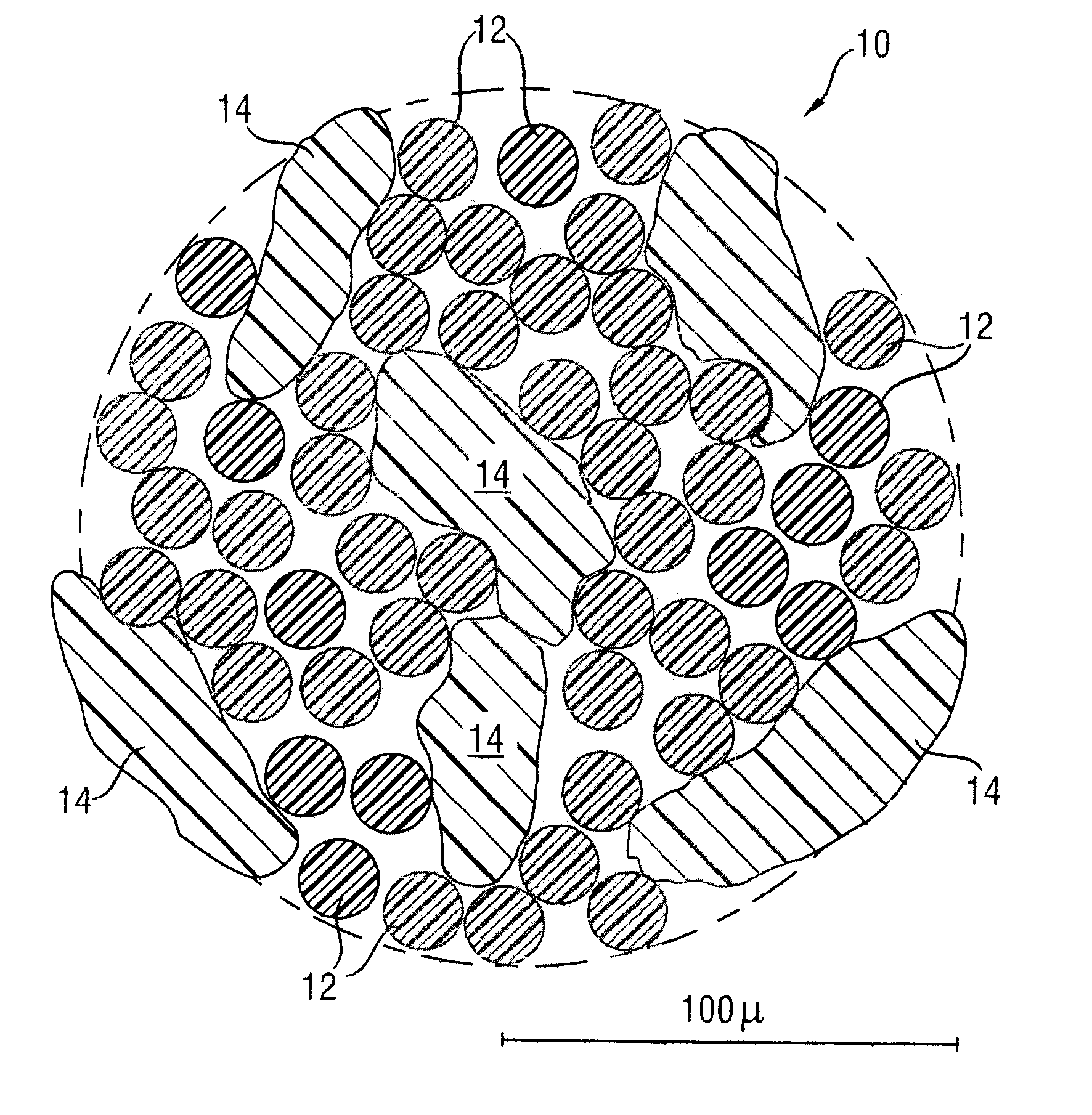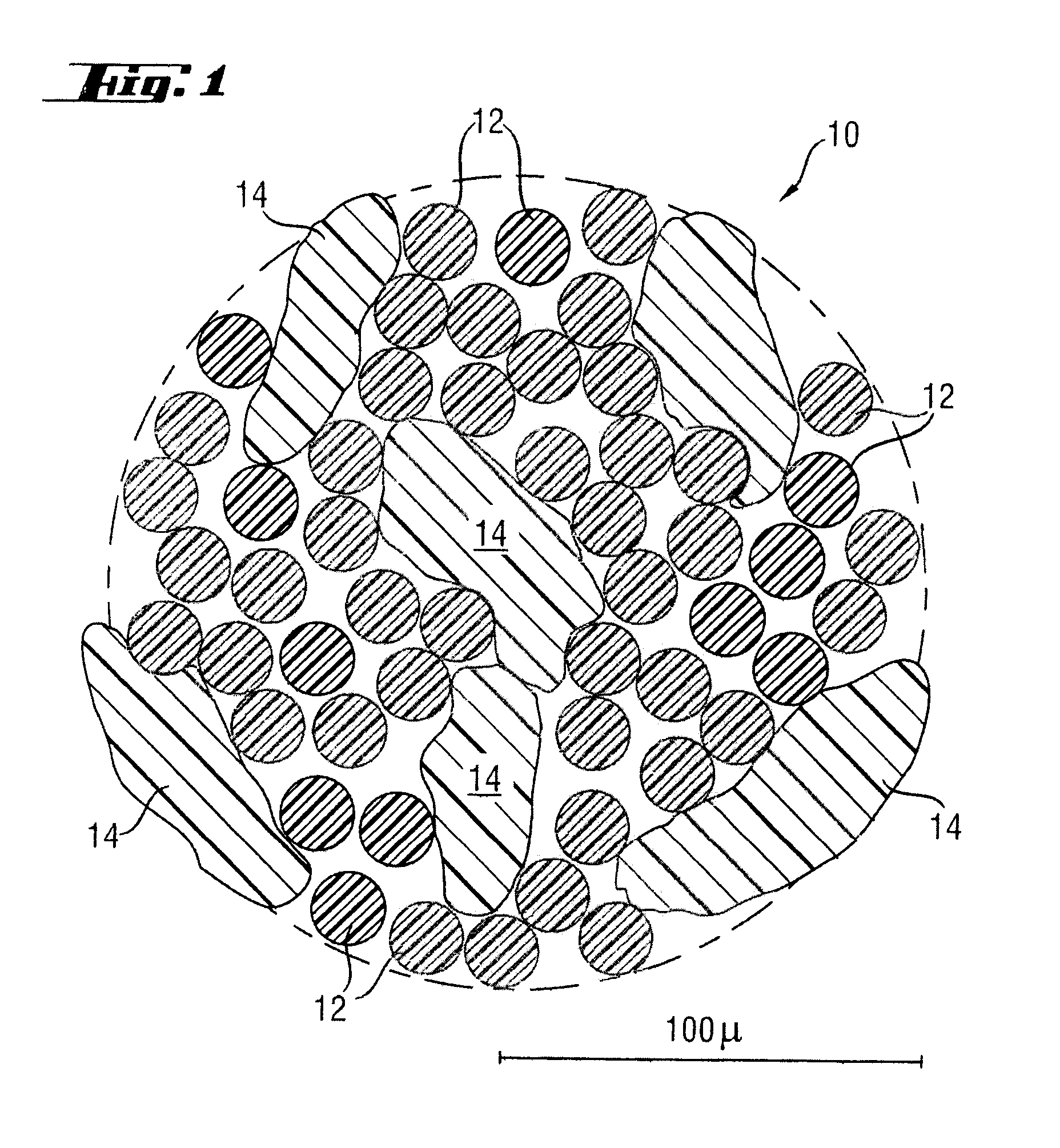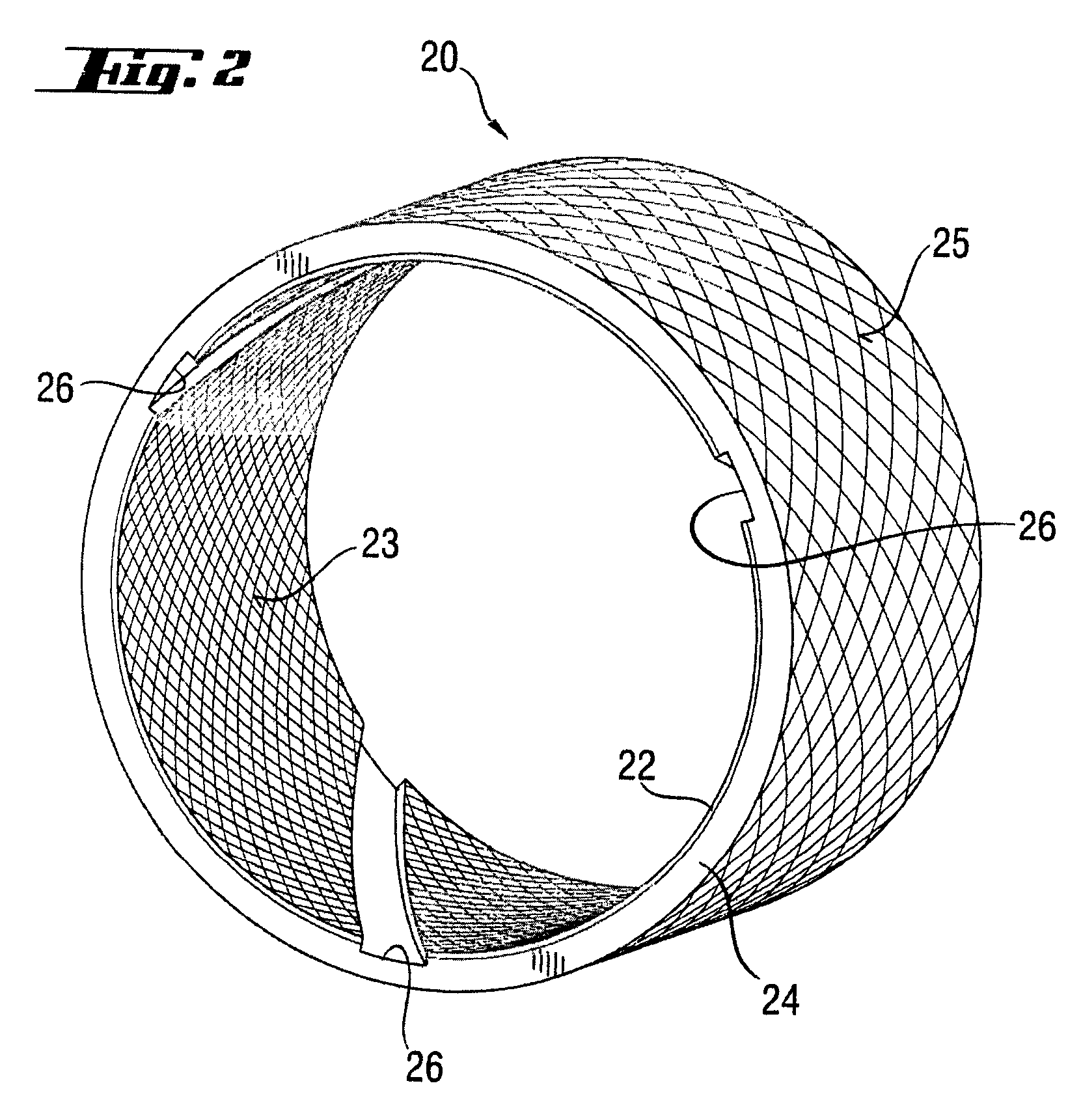Plastic glide layer and sliding element with such
a glide layer and sliding element technology, applied in the field of sliding bearings, can solve the problems of delamination of the sliding layer, inability to re-machine the sliding layer mechanically without difficulty, and inability to meet the requirements of all applications, etc., and achieves the effects of high wear resistance, easy production, and easy re-machined
- Summary
- Abstract
- Description
- Claims
- Application Information
AI Technical Summary
Benefits of technology
Problems solved by technology
Method used
Image
Examples
Embodiment Construction
[0033]Plastic thread 10 used according to the invention for the sliding layer of the outer race as a reinforcing element is shown in FIG. 1 in an enlarged sectional representation. This consists of polyester filaments 12 orientated along the thread and contains as a second component PTFE particles 14 which are spun into polyester filaments 12 in a random arrangement. During the production process there are very many possibilities of modifying the properties of the thread. For example, the number of polyester filaments 12 per thread 10 can be varied according to the application, but here attention should be paid to ensuring an adequate positive engagement with the bound in PTFE particles 14.
[0034]The weight ratio of polyester filaments 12 to PTFE particles 14 may also be varied. However, it has proved particularly preferable, in terms of adhesion, friction and sliding characteristic, if the proportion of the PTFE particles 14 in the plastic thread is between 30 and 36% by weight and ...
PUM
| Property | Measurement | Unit |
|---|---|---|
| weight ratio | aaaaa | aaaaa |
| weight ratio | aaaaa | aaaaa |
| weight | aaaaa | aaaaa |
Abstract
Description
Claims
Application Information
 Login to View More
Login to View More - R&D
- Intellectual Property
- Life Sciences
- Materials
- Tech Scout
- Unparalleled Data Quality
- Higher Quality Content
- 60% Fewer Hallucinations
Browse by: Latest US Patents, China's latest patents, Technical Efficacy Thesaurus, Application Domain, Technology Topic, Popular Technical Reports.
© 2025 PatSnap. All rights reserved.Legal|Privacy policy|Modern Slavery Act Transparency Statement|Sitemap|About US| Contact US: help@patsnap.com



